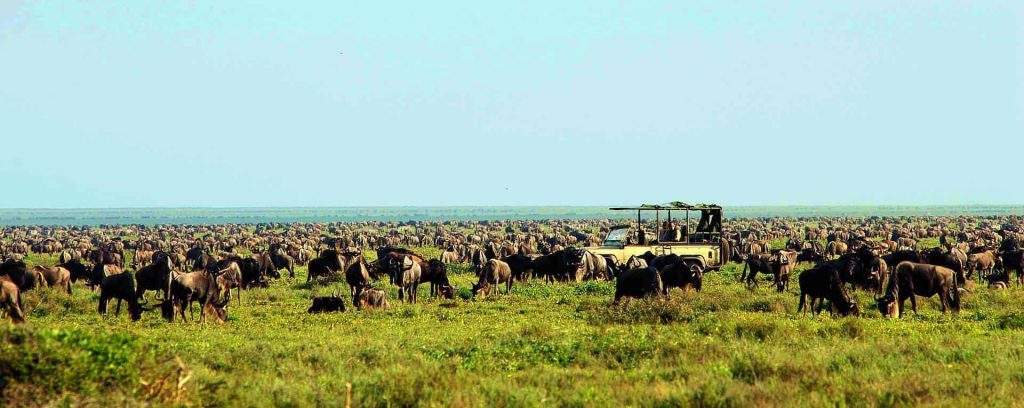Serengeti National Park.
Serengeti National Park Overview.
The Serengeti National Park, established in 1952. One of Tanzania’s most iconic wildlife destinations and home to the world-famous Great Migration. Covering approximately 14,763 square kilometres (5,700 square miles). Larger than the US state of Connecticut and offers vast, open landscapes teeming with wildlife. Visitors can witness lions, cheetahs, elephants, giraffes, and a rich variety of birds across its endless plains. Accommodation options range from luxury lodges to mobile camps, catering to every type of traveller. Despite its size, only a few hundred vehicles usually present at any given time, preserving the sense of wilderness and adventure.
Geography and Ecosystem.
The Serengeti divided into three main areas. Each with own unique features. The southern and central Seronera Valley, the classic savannah. Dotted with acacia trees and known as the “serengit” by the Maasai, meaning “land of endless plains.” The western corridor, marked by the Grumeti River, characterised by forests and dense bush. While the northern Lobo area, bordering Kenya’s Masai Mara Reserve, is the least visited. The Serengeti is part of a UNESCO World Heritage Site and Biosphere Reserve. Boasting one of the oldest ecosystems on Earth. Its climate, vegetation, and fauna have remained largely unchanged for over a million years, preserving a natural heritage that has fascinated writers. Filmmakers, photographers, and scientists alike.
The Great Migration.
The Serengeti is globally renowned for the Great Migration. An awe-inspiring movement of over a million wildebeest and around 200,000 zebras. Every October and November, these animals move south to the plains for the short rains. And after the long rains in April, May, and June, they travel west and north. This ancient instinct drives them through rivers, gorges. And predator-filled landscapes, showcasing one of nature’s most incredible spectacles. Visitors following the migration can experience a variety of habitats, from open plains to riverine forests. And encounter some of Africa’s most fascinating wildlife in their natural environment.
Historical Significance.
The Serengeti ecosystem has been inhabited by early humans for millions of years. With Olduvai Gorge providing evidence of human life dating back nearly two million years. Patterns of life, death, adaptation, and migration have persisted here almost unchanged, giving visitors a glimpse into the ancient rhythms of nature. This enduring natural history, combined with the park’s modern conservation efforts, makes the Serengeti a unique place to observe wildlife, study ecosystems, and appreciate the remarkable continuity of life on Earth.


